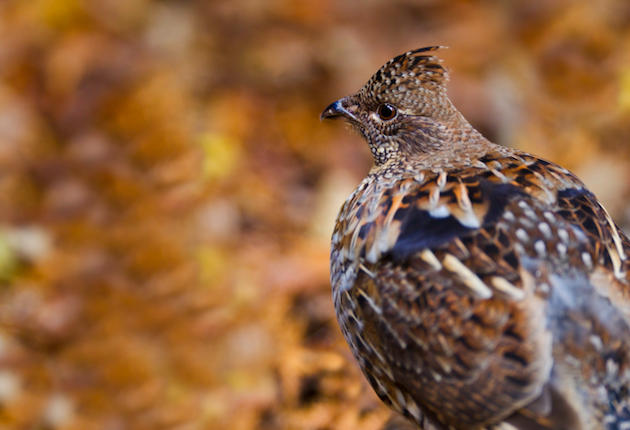The 34th annual National Grouse and Woodcock Hunt was held Oct. 8 and 9, but the results were not encouraging. The yearly gathering of the Ruffed Grouse Society produced harvest numbers lower than the long-term average, with the second worst ruffed grouse harvest on record.
The hunt was held on roughly 8,000 square miles of public and private land in and around Grand Rapids, MN, with 102 hunters participating. When the shooting was over and RGS wildlife biologists had tallied the results, 149 ruffed grouse had been shot in two days of hunting — an average of .73 grouse per person.
Based on the calculated results, biologists put the index to reproductive success among the birds at 40 percent below the long-term mean: i.e., few young birds are in the current population.
“The low proportion of young-of-the-year grouse is a double whammy for hunters. Not only are there fewer birds to pursue, but many of the birds in the woods are adults who have previously encountered hunters and dogs … They know how to play the game,” said RGS Director of Conservation Policy Dan Dessecker.
The woodcock harvest was slightly better. Hunters harvested 357 American woodcock, an average of 1.7 birds per hunter per day. The harvest is similar to the long-term average but still not ideal. Biologists put the index to reproductive success at 20 percent below the long-term average.
A press release from RGS concerning the hunt listed heavier-than-normal leaf cover as a negative factor in the southern region of the hunt, but rain the evening before the first day likely offset the fallen leaves. The wet weather helped dogs scent the birds more easily, so the different conditions essentially negated each other.
The hunt is structured to allow scientific data to be collected. It is conducted in the same area and at the same time each year to provide continuity among the data sets. It was first held in 1982 and allows biologists to study the local bird populations in relation to their 10-year ecological cycles.
Like acorn production in oaks, bird populations are cyclic and follow trends of higher and lower numbers. The birds in the hunt’s vicinity typically have lower numbers in years ending in “4” and “5” — 1984, 1985, 1994, 1995, etc. — and higher numbers in years ending in “9” and “0”, such as 2000 and 2009. Based on this cycle, the birds of 2015 should be in the trough of the 10-year wave.
This year’s low is particularly low, however. Further research and next year’s hunt will hopefully reveal if the low is a fluke or an accurate representation of the birds in the area; additional data from other parts of the birds’ range may help biologists determine if this is an isolated case or a broader trend among woodcock and grouse populations.
To find out more, visit ruffedgrousesociety.org.
Cover Image: Thinkstock

